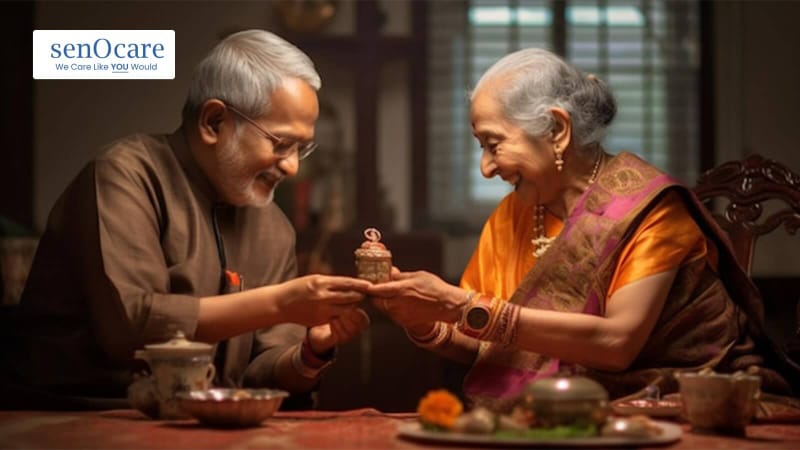Define palliative care
Palliative care is an interdisciplinary approach to providing care to people with a life-limiting illness. It is intended to improve their quality of life and their families through a range of emotional, social, and spiritual support. Patients may receive curative medical treatments alongside palliative care. Because it provides support to family members, it is also known as "supportive care."
There are 5 stages of palliative care. Each stage provides relief from the symptoms and stress of the situation at hand. Anyone can receive palliative care for the treatment of life-threatening diseases that are not limited to:
- Heart diseases
- Cancer
- Stroke
- Chronic respiratory illnesses
- Chronic Kidney and liver disease
- AIDS
- Diabetes
- Multiple sclerosis
- Chronic congenital disabilities
- Neurological disorders

Why Do We Need Palliative Care?
Complex and serious illnesses bring up all sorts of difficulties -- from physical pain to emotional turmoil and everything in between. These problems can be overwhelming to manage and maybe beyond what the medical team can address alone. That is where palliative care comes in.
Palliative care supports patients and their loved ones beyond just medical treatment. The purpose of palliative care is to improve the quality of life and provide emotional, spiritual, and practical support as you need it. The resulting benefits are:
- Improved satisfaction as it puts the patient’s wishes, preferences, and values first
- Increase in life expectancy through pain management and symptom control
- Less anxiety and depression
- Reducing unnecessary hospital stays
- Support to family
Studies indicate that cancer patients who receive palliative care have improved emotional well-being. Additionally, their families report higher levels of satisfaction with the care provided to the patient.
5 stages of Palliative Care
Palliative care, as a type of specialized medical care, prioritizes symptom control and overall quality of life. Because of its low awareness, people misunderstand this advanced care model as end-of-life care. In this blog, we delve into the 5 stages of palliative care that can span for years, not just the final years.
Understanding these 5 stages of palliative care is crucial in determining when and how to initiate palliative care to help patients and their families navigate the physical and emotional challenges.
Stage 1: Stable
The first stage is about creating a plan when your loved one’s condition is relatively stable. It is the decisive part of determining what high-quality care services the patient will need. It entails the following process:
- Identifying health problems and current symptoms
- Medications and therapy for symptom relief
- Future course of care as the disease progresses
- Preference over receiving care at home or in an institutional setting
The palliative care team may comprise doctors, nurses, caregivers, and other allied health professionals to ensure that the patient stays as independent as possible.
Stage 2: Unstable
If the patient begins to experience new medical complications or worsening of existing symptoms, palliative care progresses into the “unstable” stage. This stage calls for some readjustment of care plans to make the patient as comfortable as possible. During this stage, the palliative team orchestrates emotional, spiritual, and mental health care support to deal with stress and anxiety. The process involves:
- Psychological Counselling for patients and family members
- Spiritual and religious gatherings for peace of mind
- Recreational activities like massage or music therapy
Stage 3: Deterioration
The third stage is called the “deterioration phase,” wherein symptoms worsen and overall health starts to decline. During this phase, more complex medical issues may arise, meaning it could be a more distressing time for everyone. Hence it is vital to arrange for extra support during this phase. Treatment may shift from standard palliative care to end-of-life care. This includes:
- Medical treatments as appropriate for symptom relief and pain management
- Provision of oxygen cylinders or nebulizers for relieving breathlessness
- Nursing services to assist with daily hygiene activities
- Psychosocial and spiritual care to patients and family members
The goal is to make the care continuum comfortable for the patient and complete the final lap of life’s journey with dignity and peace.
Stage 4: Terminal
At this stage, the patient's illness has progressed to the point where curative treatments are no longer effective. The primary focus of care is on end-of-life support. Hospice care is often utilized during this stage, and medical interventions are focused on providing symptom relief rather than curative treatments. It involves:
- Medications and other treatments for pain and symptom management
- Comfort measures such as bed positioning, skincare, and oral care
- Spiritual care for the patient and their loved ones
- Ensuring that the patient's end-of-life wishes are respected and honored
These measures can help to promote a peaceful and comfortable environment for the patient during this final stage of life.
Stage 5: Bereavement
"Bereavement phase" occurs after the patient's death. The death of a loved one can have a profound impact on family members. Hence the focus of care shifts to providing emotional, spiritual, and psychosocial support to help them cope with their loss. This can last from weeks to months depending on the personal needs and situations of the individuals involved.

Who provides palliative care?
Palliative care takes a holistic approach to a patient’s overall well-being, not just physical symptoms. Hence the support staff is an interdisciplinary team of specialist healthcare and social care professionals. It includes:
- Doctors
- Nurses
- In-home caregivers
- Psychologists for emotional counseling
- Social workers to guide on family and financial support
- Religious or Spiritual workers to practice faith and offer prayer
At what stage do you get palliative care?
Palliative care is irrespective of any age or stage of an illness, but it is recommended to seek support as early as possible. The decision can be based on personal readiness or the need for extra assistance in managing a chronic illness. Studies show that seeking palliative care earlier can lead to better chances of survival and can prevent unnecessary hospitalization.
Can A Patient Recover From Palliative Care?
Palliative care can increase life expectancy as it can continue with curative medical treatments for serious illnesses. The earlier onset of palliative care may help patients recover and move out of palliative care, or move in and out of it depending on their symptoms.
FAQs: Questions to ask my doctor about Palliative Care
What are my treatment options?
Treatments depend on the stage of palliative care. Generally, it includes:
- Medications for pain and symptom management
- Nutritional guidance
- Physical therapy
- Integrative therapies like massage therapy, music therapy
- Spiritual and emotional support to relieve stress and anxiety
How will palliative care help me manage my symptoms?
The palliative care team will create a patient-centered care plan tailored to your symptoms. These interventions may include medications, therapies, or other techniques to help control pain, nausea, anxiety, and other troubling symptoms associated with the illness or treatment.
What are the possible side effects of each treatment option?
Pain relief medications have side effects of constipation, drowsiness, nausea and vomiting, dry mouth, or itchy skin. Palliative care treatments help you manage symptoms and side effects. That’s why it is also called “comfort care.” It's important to discuss any specific concerns you have with your healthcare team to help you weigh the benefits and risks of each option.
How will palliative care help me make decisions about my care?
As patient-centered care, palliative care prioritizes your values, goals, and preferences related to your care. It can help you make informed decisions about your care by providing information about your illness, treatment options, and potential benefits and risks.
Difference between palliative care and hospice.
Unlike palliative care, the goal of hospice care is to provide comfort, not cure. It usually starts at an advanced stage of palliative care when treatments can no longer control an illness. Hence it is also called “end-of-life care.”
How will palliative care help my family and loved ones cope with my illness?
Palliative care can provide emotional, social, and spiritual support to your loved ones, helping them cope with your illness. It facilitates communication between the patient, family, and healthcare team to ensure everyone is on the same page.
At SenOcare, we are passionate about making lives better for your elderly loved ones. We understand that living with a chronic illness can be challenging, which is why we offer palliative care to provide the best possible support during this difficult time. Call us today at +91 8800 700 100 or email us at info@senocare.in for more details on customized eldercare plans.
References:
The 5 stages of palliative care: Article, Elder.org
The 5 Stages of Palliative Care: Blog, Maple Services
Palliative care: Research, WHO, Aug 5, 2020
Late Stage and End-of-Life Care: Article, Helpguide.org
Palliative Care: Article, Cancer.org
Palliative Care and the need to popularize it: Blog, Senocare, Jun 6, 2022
Five facts : About comfort care for elders, Senocare blog, May 26, 2022
What Are Palliative Care and Hospice Care? Journal, National Institute of Aging


